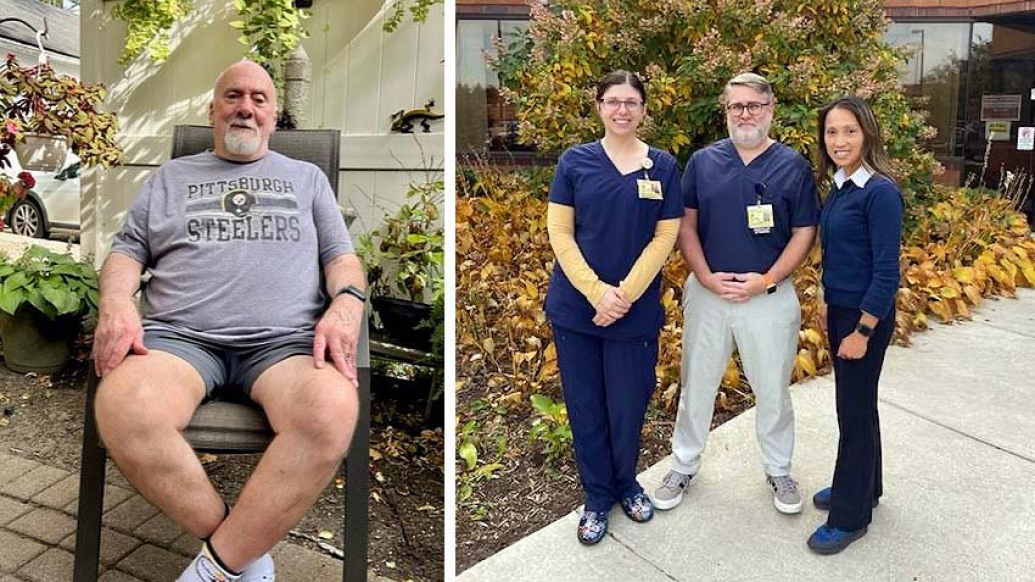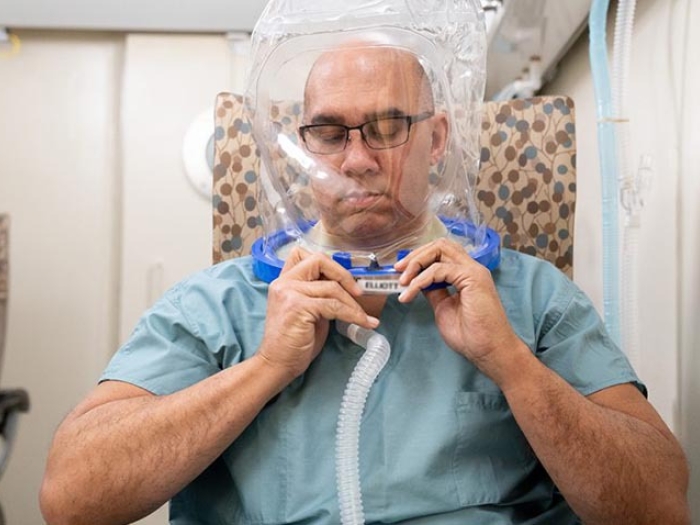The new program’s first direct enrollment patient shares his experience.
5:00 AM
Author |

When Philip Santini noticed an infection, he contacted his primary care physician, Jane Chargot, M.D., and she prescribed him antibiotics.
However, test results showed that he wasn't recovering. Over the phone, Santini was told he would need to go to the hospital to get infusions three times a day for several days.
He was packed and ready to head out to the hospital when he received another phone call. An alternative plan was suggested instead — Hospital Care at Home.
MORE FROM MICHIGAN: Sign up for our weekly newsletter
Care at Home, a Michigan Medicine program which improves the patient experience while freeing up hospital beds, has already admitted and transferred more than 50 patients from the emergency department and inpatient hospital to receive hospital level care from the comfort of their own homes.
Santini was the first direct enrollment patient for this program, meaning he never presented to the hospital initially. It was no surprise that there was a celebration for this milestone.
Santini, himself, was so thrilled.
"I was ready to head out to the emergency department," said Santini, who even had a list of things to take when he got a call from Stephanie Paran, R.N., a nurse at U-M Briarwood Family Medicine. "She had talked to my doctor and they wanted me to consider being part of the program. She said it would be just like going to the hospital but staying home. She was right."
Although he initially didn't know what to expect, he later said the care team far exceeded his expectations, especially the caregivers.
"They were wonderful, every one of them," Santini said.
The staff gave him infusions three times a day for six days. They took his regular medications away, just like how they would in a hospital. They checked the infection, drew blood and even brought in an ultrasound machine.
"I didn't know that was possible," Santini said.
He estimated he would have been in the hospital for at least five or six days if not for Hospital Care at Home.
After discharge, a Michigan Visiting Nurse visited once a week until he completed his round of oral antibiotics.
He believed treatment at home has helped the healing process.
"I've never felt really comfortable in the hospital," he said. "It's hard to get good sleep there. At home I had my own food, my own bed, plus my wife is here. No one has to go out of their way to visit me. It's a healthier experience. I would encourage anyone to consider it."
Live your healthiest life: Get tips from top experts weekly. Subscribe to the Michigan Health blog newsletter
Headlines from the frontlines: The power of scientific discovery harnessed and delivered to your inbox every week. Subscribe to the Michigan Health Lab blog newsletter.
This article was additionally edited by Allison Mi.
Like Podcasts? Add the Michigan Medicine News Break on iTunes or anywhere you listen to podcasts.

Explore a variety of healthcare news & stories by visiting the Health Lab home page for more articles.

Department of Communication at Michigan Medicine
Want top health & research news weekly? Sign up for Health Lab’s newsletters today!





